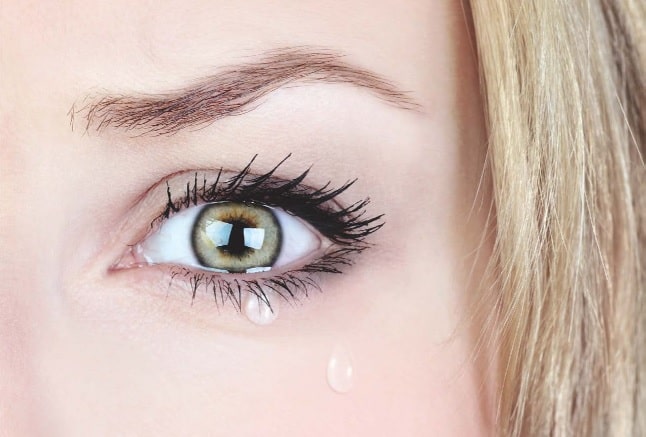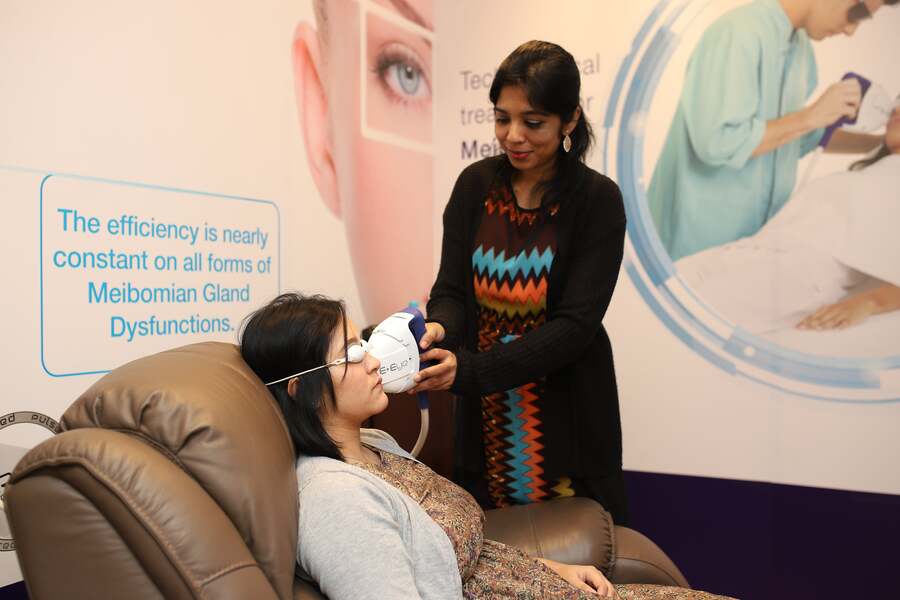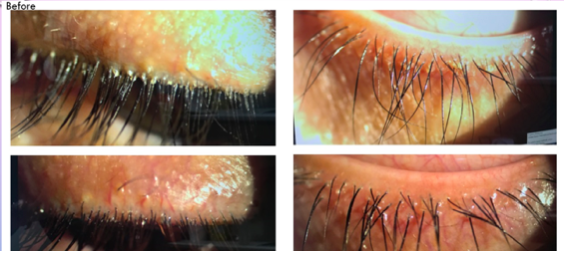Advanced Dry Eye Clinic

Dry eye is a very common as well as under-diagnosed eye disease. It is not only upsetting in terms of its symptoms but also imposes a high financial burden to patients worldwide. DED is affects mostly the elderly especially women. However in recent years(2016, American Academy of Opthalmology) , it has been hitting the younger populations mainly due to the constant exposure of electronic devices such as laptops & handphones, sedentary lifestyle which include sleep deprive, stress and even poor diets.
About 25 percent of patients who visit clinics report symptoms of dry eye, making it a rising public health problem and one of the most common eye disease. Recent studies shows prevalence rates ranging from 7% in the United States to 33% in Taiwan and Japan (Asia). Other risk factors also include : refractive surgery, contact lens wear, and certain medications.
DED can be categorized into two : Evaporative Dry Eye & Aqueous deficiency DED. Among those, Meibomian Gland Dysfunction is the leading cause of evaporative dry eye disease (80%).
A summary of a 1998 Dry Eye workshop, cosponsored by the National Eye Institute, concluded that there were insufficient data available on statistic/prevalence of DED and how it is affected by demographic factors. Since then, several studies have evaluated DED prevalence. In the United States (US), estimates have ranged from 4.3% among men aged ≥50 years to 21.6% in men and women aged 48–91 years and 14.5% among those aged ≥21 years. The study also found no difference in diagnosed DED prevalence between Asian & white participants. However, this is opposite of the DED prevalence studies done in Asian countries such as in Taiwan & Japan. In the Taiwanese Shihpai study, 33.7% of individuals aged ≥65 years reported experiencing 1 or more symptom(s) of dry eye often or all the time. Among individuals aged ≥40 years in the Japanese Koumi study, prevalence of clinically diagnosed DED was estimated at 2% for men and 7.9% for women.
In a recently reported New Zealand study, Craig and associates observed that the Asian population has higher
meibomian gland dropout and poorer blinking compared with the
white population. Together, these observations suggest that DED may be underdiagnosed among Asian patients in the US, but further research is needed. Another possibility is that the population distribution of other DED risk factors may differ among people of Asian descent in the US vs countries in Asia.There is no specific study done on the prevalence of dry eye in Malaysia, however the trend has always been less than 15% among populations. With the increasing amount of eye drops usage and complaints of dry eye symptoms, dry eye disease is still under diagnosed here. It is our responsibility as eye care professionals to create the awareness as well as the importance of managing DED to the public.
With all these doubts & question marks in awareness & diagnosis of DED, public should be made aware of not just the consequence of the disease but the importance & availability of various treatments in solving this issue. Although Dry Eye disease can’t be healed overnight , right treatment options do help in alleviating the symptoms that has been torturing patients every single day, and thus improving their quality of life with this advanced treatments. A regular eye examination is require to make sure dry eye is properly diagnosed and managed before its too late.
Many dry eye treatments are aiming at reducing the inflammation rate in the eyes. New therapies that helps alleviating the signs and symptoms of dry eye disease and, consequently, improve the quality of life of dry eye patients are available in the market which include BLEPHEX & E>EYE IPL. And KPJ CFS is proud to be providing a complete Dry Eye Suite for our patients
Dry Eye Suite in KPJ CFS
OSA SISTEMI
- OSA stands for ocular surface analyser.
- Ocular surface include: tearfilm , cornea , conjunctiva , eyelids
- Why Do you need OSA in your clinic?
- full ocular surface assessment with a detailed report in less than 5 minutes.
Research on all the layers:
• Lipid (outer layer)
• Aqueous (middle)
• Mucin (inner)
- Identify the type of DED (Dry Eye Disease) and which layers can be treated with a specific treatment, in relation to the type of deficiency.
- Light & portable (slit lamp mounted)
- Non invasive
- Incorporate with international grading scales.
- Also help in management of MGD patients through treatment such as IPL


